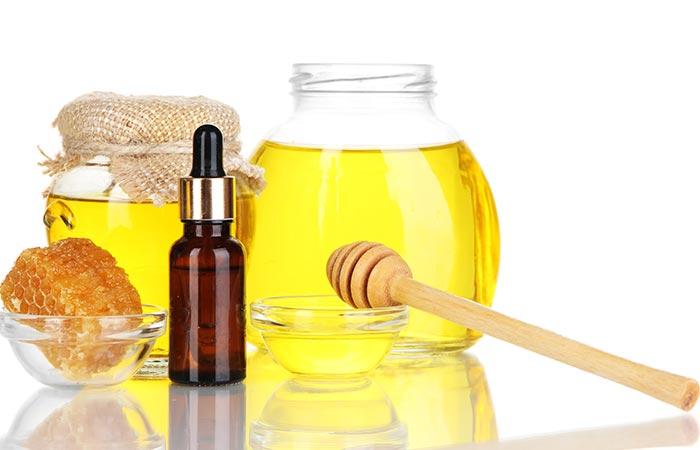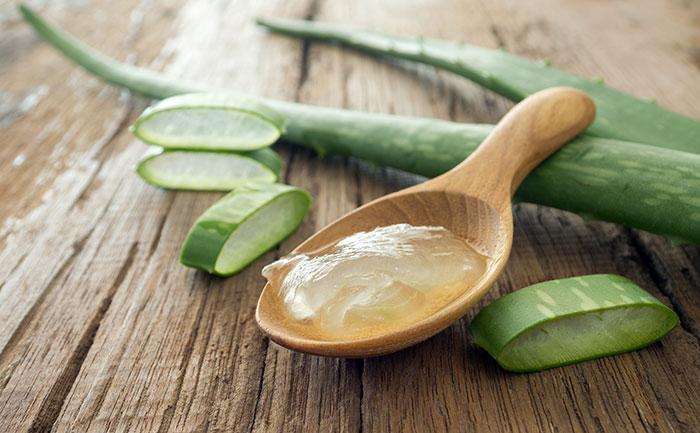
It’s no secret that the most timeless beauty trend of all time is glowing, healthy skin. People travel the world, invest countless amounts of money, and do basically any treatment at their disposal for a baby-soft skin that is free of acne and scars. After all, nothing empowers more than feeling confident and content in your skin. A body that looks well-toned and glowing like J.Lo’s is pretty much the last goal, but you can’t get there without showing your skin a little loving care.
Your skin is the largest human organ, and you can think of it like a map of everything you put in and on your body. This is where the importance of proper care, nutrient-dense diet and hydration comes in. While a glowing skin reflects good health, a skin ridden with acne, blackheads and whiteheads signals towards improper nutrition, hormonal imbalance and oxidative damage.
From moderate to severe, acne can trigger excruciating and unappealing outbreaks on the face, back, chest, shoulders and even arms. If left uncured, acne can also cause hampered self-image and long-term hyperpigmentation or blemishing.
The good news is: you can cure cystic acne, whiteheads, blackheads, and hyperpigmentation via numerous home remedies mentioned in this blog.
Note: Before you resort to possibly unsafe prescription drugs and/or topical medications, learn that getting rid of breakouts naturally is possible. A healthy diet, use of essential oils, proper cleansing and balancing of hormones are some of the essential ways you can re-establish your skin condition, lessen unattractive pimples and check scars.
In This Guide
1. What is Acne
2. Types & Grades of Acne
3. Causes of Acne
4. Signs & Symptoms of Acne
5. Habits that Make Acne Scarring Worse
6. Medical Treatments for Acne
7. 12 Essential Home Remedies for Acne & Acne Scars
8. Precautions for Acne Treatment
9. Quick Takeaway
What Is Acne?
Acne is a skin condition triggered by sebum (oil) and dead skin cells trapped in hair follicles. It is characterized by pimples, blackheads, whiteheads, greasy skin and possible scarring.
Although acne lesions generally appear on the face, they can also be spotted on neck, chest, shoulders, back, and upper arms. Usually common amongst hormone-ridden teenagers, acne can affect even adult men or women for various reasons such as genetics, menstrual cycle, application of oil-based makeup, anxiety, stress and more.
Types of Acne
I. Non-inflammatory acne
It is characterized by whiteheads and blackheads, but not cysts/nodules.
II. Inflammatory acne
It is generally triggered by small infections.
III. Cystic acne/nodulocystic acne
It is a severe type of acne that leads to appearance of huge, inflamed cysts and nodules on the skin
IV. Acne Fulminans
It is a serious type of inflammatory acne, generally experienced by adolescent males on chest, back, and jawline.
V. Acne Mechanica
It is caused by extra stress, heat, and friction and generally leads to minor bumps and swollen lesions.
Depending on the type of symptoms caused, acne can be graded as:
- Grade I: characterized by slight blackheads, whiteheads and small pimples that are not inflamed.
- Grade II: Characterized by moderate acne that triggers frequent breakouts of pustules and papules.
- Grade III: Characterized by a great amount of inflammation, numerous papules and pustules, and some nodules.
- Grade IV: The most severe form of acne, characterized by many nodules, cysts, pustules, and papules that often occur on the face, chest, neck, and back.
Also Read: We’re Trading Makeup For Dark Chocolate And Here’s Why
Common Causes of Acne
The main causes of breakouts are:
1. Hormone imbalances. For instance, when there’s a rise in androgen hormones, oil production increases. This generally occurs in teens and young adults, especially women experiencing irregular periods, PMS, pregnancy, early menopause, and other hormonal problems like polycystic ovarian syndrome (PCOS).
2. Genetic predisposition.
3. Clogged pores, triggered by dead skin cells and additional oil production. Sebum is the type of oil discharged into hair follicles that can get stuck beneath the skin surface and clog pores.
4. Improper diet, comprising of unhealthy fats, sugars, and refined grains.
5. Sleep deprivation or poor quality of sleep.
6. Excessive stress and related conditions like psychiatric disorders such as depression and anxiety.
7. Consumption of certain medications like corticosteroids, androgens, lithium and birth control pills.
8. Friction and irritation of the skin, such as from dirty pillows or sheets.
9. Consumption of alcohol and smoking.
Also Read: 5 Easy D-I-Ys To Incorporate Avocados In Your Daily Beauty Regime
Signs & Symptoms of Acne
Acne symptoms differ on the basis of a particular type of acne and the underlying reason for skin irritation/inflammation. The most common symptoms triggered by breakouts are:
1. Blackheads, or small black dots on the skin, typically around the nose, chin or forehead. Also referred to as “comedones”, these are caused by debris that get stuck in a hair follicle.
2. Whiteheads, which are produced when pus accumulates under the skin and creates a “head”. These are the end results of sebum and dead skin cells getting trapped in hair follicles.
3. Papules and pustules (the methodical name for pimples) which lead to the appearance of small or medium-sized bumps on the skin that are round, red and don’t always have a noticeable “head”. These are triggered by “moderate” types of acne and are not as serious as cysts or nodules.
4. Nodules or cysts, which are an intense form of pimples that are infected and sore. They can be created within deeper layers of the skin, become very inflamed or tender, and take extensive periods of time to cure as compared to papules and pustules.
5. Scars, left behind from acne, especially if they have been touched or picked.
6. Hyperpigmentation or dark spots on the skin.
7. Greater sensitivity to products, sweat, heat, and sunlight.
Habits That Make Acne Scarring Worse
Before you learn the treatments for acne, take a look at common habits that can worsen its scarring.
- Popping and picking pimples
- Avoiding proper nutrition and hydration
- Overusing harsh chemicals and cleansers
- Overusing of oily makeup products
- Not treating acne from the inside-out
- Sticking solely to topical treatment of acne
Medical Treatments for Acne
While some people opt to live with breakouts, others rely on medications or chemical treatments that frequently bring forth unwanted consequences or are completely ineffective.
Dermatologists can recommend medications to cure acne, comprising of gels, cleansers, and antibiotics. The unsafe chemicals present in over-the-counter products can further aggravate irritation and harm the sensitive skin.
Two main ingredients present in many acne treatments are termed as ‘benzoyl peroxide’ and ‘salicylic acid’. While benzoyl peroxide helps destroy bacteria present inside pores, salicylic acid that helps eliminate excess cells that trap sebum and bacteria. While these ingredients might show results initially, they can also lead to inflammation, dryness, redness and chapping. It is advisable, to begin with a lower concentration (with 2.5% benzoyl peroxide and 0.5 to 3% of salicylic acid) to check for possible reactions.
Once acne is cured, dermatologists might suggest a peel such as glycolic peel to reduce the appearance of acne scars. Peels and other treatments can also intensify photo-sensitivity, so make sure you shield your skin from the sun.
10 Essential Home Remedies for Acne
Since we all possess a uniquely different skin, the results of treatments are also unique. This necessitates the use of a multi-disciplinary approach while treating acne at home.
Here’s a round-up of 10 essential and easy home remedies to cure acne.
1. Gentle Cleansing

Getting rid of stubborn pimples begins with getting rid of dead skin cells, oil, and bacteria. Use natural face wash made with honey, vinegar, probiotics and coconut oil to gently clean your skin twice a day and remove any dirt. Avoid cleansing too often, as this could irritate your skin and lead to overproduction of oil.
Furthermore, certain makeup products might contain ingredients such as lanolin, mineral oil, retinyl acetate, aluminium, alcohol, triclosan, polyethylene, oxybenzone, parabens, BHA and BHT which could trigger acne. Check the labels before purchasing.
2. Skin Toning

Toning aids in removing any residue after cleansing and helps re-establish the natural pH levels of the skin. You can apply organic apple cider vinegar, which comes loaded with the goodness of magnesium, potassium, acetic acid and numerous enzymes that destroy bacteria. Long-lasting pimples can be the outcome of bacteria and fungi that endure to spread and grow on the surface of the skin. Using a cotton ball, apply diluted ACV over the skin, especially to pimple-prone areas. Keep this on your skin for 2 minutes and rinse off with lukewarm water.
3. Regular Exfoliation

Two of the major causes of breakouts are dead skin cells and clogged skin. Weekly exfoliation helps get rid of buildup. You can prepare your own DIY scrub at home using brown sugar, sea salt or oatmeal. Use kefir, honey or coconut oil as a base to avoid dryness and irritation. These bases will help combat bacteria, fungi and Candida over-production on the skin while the textured ingredients ill help to unblock pores and eradicate dead skin.
4. Moisturizing

As against the popular belief, pimple-prone skin still requires proper moisturization. Using treatments that focus on removing excess oil out of the skin trick the skin into creating even more oil, thereby further aggravating the problem of clogged pores and acne.
Coconut oil, along with its numerous health benefits, is one of the best natural moisturizers for your skin. A research printed in Biomaterials established that lauric acid present in coconut oil exhibits the strongest bacterial activity against breakouts caused by bacteria. There is an increasing demand for coconut oil beauty products because the lauric acid, antioxidants, and medium-chain fatty acids nourish and repair skin and hair.
Note: Make sure that you wipe off any excess coconut oil (other than the amount absorbed by your skin) as this can lead to further breakouts due to sticking of dirt.
5. Healing Masks

To nourish and repair your skin with natural ingredients, use masks a couple of times every week. Ingredients like honey, yogurt, essential oil and cinnamon can be used to create DIY homemade masks that combat breakouts.
To prepare the yogurt and honey mask, combine one tablespoon of raw honey with one tablespoon of yogurt. Gently apply on your face, especially to affected areas. Unwind for 10 minutes and gently rise with lukewarm water. You can also add coconut oil and cinnamon to this mask for increased benefits.
6. Spot Treatment With Tea Tree Oil

Tea tree oil, also called melalecua, is effective in treating acne by fighting bacteria and fungi. According to studies, tea tree oil gels comprising of 5% tea tree oil may be as useful as medications containing 5% benzoyl peroxide. However, researchers also specify that tea tree oil may work more slowly for some individuals, so try to be patient.
To prepare an effective home remedy for breakouts using tea tree oil, add 4–8 drops of tea tree oil to one teaspoon of coconut oil. Alternatively, you can also use jojoba oil in place of coconut oil. Gently dab this mixture to problem areas. Before actual use, test your skin for any reactions to the oil.
7. Relief from Aloe Vera

This natural plant is used all around the world for its naturally soothing effect. It helps to battle infectious bacteria, encourage healing and reduce scarring. You can either directly scrape the gel from the plant or purchase an aloe vera gel from the market. Make sure that you only apply pure aloe vera, with no additional ingredients.
8. Healthy Diet

Science has proven that consuming a low-glycemic, nutritious diet can help avert breakouts. Processed and refined foods, like those common in the Western diet, are high-glycemic, while fruits and whole plant foods are low on the glycemic scale.
Here are some essential suggestions for following an acne-free diet:
- Consume ample amount of leafy green vegetables, fruits, nuts and seeds that are rich in fibre as fibre improves digestion and growth of good bacteria in the gut.
- Healthy fats are vital for good skin health and curing breakouts at home, so consume foods abundant in omega-3s.
- Add zinc-rich foods like yogurt, kefir, and pumpkin seeds to your diet.
- Consume vitamin-A rich foods such as carrots, spinach, papaya, etc.
- Avoid foods like sugar, cow’s milk, and unhealthy oils.
9. Prevent Sun Damage

For pimple-prone skin, it’s crucial to protect against sun exposure. Ultraviolet rays encourage pigment-producing cells, enhancing the risk of acne scarring. Always use natural sunscreens and don’t stay in the sun for longer than 20 minutes a day. Avoid commercial sunscreens loaded with unsafe chemicals that can bother delicate skin.
10. Exercise Regularly

One of the major causes of poor skin health in adults is everyday stress. Indulge yourself in energizing Zumba or peaceful yoga right at the comfort of your home to boost those endorphins and release any stress from personal and professional life. If you’ve got a super packed schedule, take a walk in nature early in the morning and practice deep breathing exercises to manifest that healthy glow.
Also Read: Back To Work? Add These 14 Beauty Essentials To Your Work Bag
A Word of Caution Regarding Acne Treatments
Mild breakouts might go away on their own after sometimes, particularly if you’re an adolescent or suffering from a stressful phase in your life. However, if you’re experiencing stubborn, persistent acne (especially cystic), then it’s highly advised to seek the professional guidance of a skin specialist. Huge, swollen, tender cysts on your skin could be indicative of an underlying health problem such as thyroid or PCOS.
QUICK TAKEAWAY
Acne is characterized by various types of skin conditions like whiteheads, blackheads, hyperpigmentation, papules, pustules, cysts and discoloration or scarring.
Causes of acne generally comprise of genetics, clogged cores, bacterial infections, hormonal fluctuations, irritation, improper diet, stress, anxiety and lack of quality sleep.
Some of the best home remedies for acne and acne scars are gentle cleansing, toning, moisturizing, preventing sun damage, balancing hormones, using essential oils and eating a nutrient-dense diet.
Once you’ve gotten rid of breakouts and achieved your clear skin goal, it’s crucial to follow a nutritious diet, stay hydrated, keep up with your new skin care regime and clean your pillowcase frequently to avoid the nightmarish return of acne.











Join The Conversation